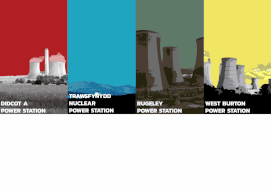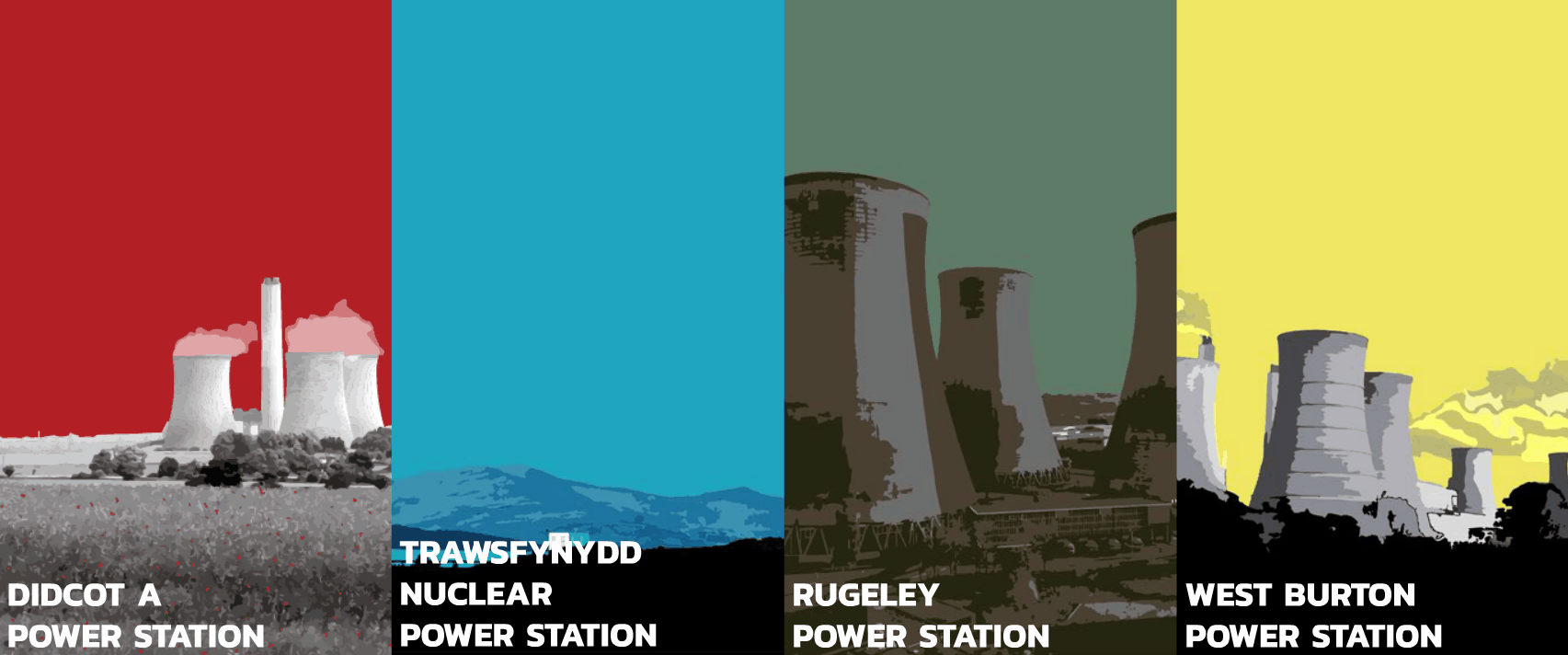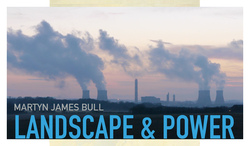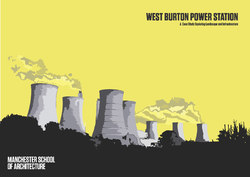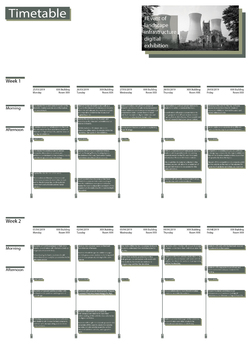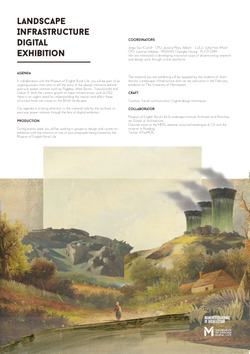Group B Landscape Infrastructure Digital Exhibition
Due to prevailing demands, infrastructural projects such as power stations were built during the post-war period. The rapid establishment of the industrial landscape and its effect on the rural urban environment was in fact comparable to the UK industrial revolution. Having its influence on the physical landscape, co-production was highly recognized in the UK. Throughout the events session, we will explore the relationship between the infrastructure establishment and landscape architecture design based on the University collection and case studies of works from mid-C20 landscape architects, including Brenda Colvin, Sylvia Crowe and Derek Lovejoy. In collaboration with MERL (Museum of English Rural Life), we will present this to the broader public through a form of digital exhibition. This will be a new, engaging way of communication which tells the story of the design intentions behind post-war power stations and its cooperative landscape design. // Download Poster
Today our team began to put together our finalised interactive digital exhibition pages! As you can see above we have considered how we would like our pages to look as well as function. We used the MERL website along with others to inspire the design, especially when looking at the pop-out windows in our layouts. This is one of four of our case study exhibitions which are now all being tied together to create the final collaborative website proposal for tomorrow.
After the past few days of analysing our case studies and designing templates for our team’s digital exhibition concepts, we have begun to prepare for making our final concept design!
Today we began by learning how to use interactive PDF’s using InDesign as we will be using this to create a template of how we would like our digital exhibitions to look and function. We have been exploring the possible ways to indicate to users that aspects of our pages are interactive, and how we might indicate this.
Above is an example of one of our tests. This example allows users to scroll over the case studies and gain more information about them before clicking to learn more.
Today our four teams began producing draft templates of how they might want their digital exhibitions to look.
Shown above is a preview of the Didcot A Team’s proposal. This digital exhibition would be presented as an interactive wheel, displaying categories related to the design and life cycle of the power stations. When hovering over the category the user might be interested in, more information would be shown on the right-hand side of the page.
The team chose to design the exhibition in this way so that users would easily be able to find the information they might be looking for.
Today our four teams began producing draft templates of how they might want their digital exhibitions to look.
Shown above is a preview of the West Burton Team’s proposal. This digital exhibition would be presented as a scrollable timeline with interactive images and text as you make your way down the page. The team decided on this concept as it is easy for all users to understand and navigate through and it would be easily applicable to the other case studies work.
The timeline approach proved to be a popular theme among our teams as three case study groups presented similar proposals at our end of day presentations.
To get to know each other better and see what styles people use for laying out information, each student produced their own personal poster.
Day 5 we focused on production, discussing how could websites be more engaging and researching precedents in smaller groups.
Digital exhibitions are showcases of information which have no physical boundary of space. Often referred to as online or virtual exhibitions, digital exhibitions are typically hosted on the internet.
Digital exhibitions can be made for a variety of reasons, some of which are;
- Being able to connect with a larger audience.
By eliminating the need for visitors to spend time and money travelling to a specific location, the information becomes much more accessible to the public.
- Being able to showcase more information.
Without the physical constraints of a room or plane, organisers are free to share more information and work, meaning the audience can learn and gain more from the experience.
- Avoiding the risk of damage to sensitive and historical items.
Often with physical exhibitions, expensive or fragile items can be used in displays. This can often come with expensive moving costs and high security levels. With the use of digital exhibitions, pieces can be captured and shared without the risk of damage.
- Lower running costs.
By removing the costs of renting a physical space, having employees, insuring items, etc, digital exhibitions can be very cost effective in the long run.
The design of a digital exhibition is like that of a physical one. The content, visuals/graphics and technology used is combined to create a positive learning experience for the audience. A key part of designing digital exhibitions is understanding the best methods in which you use to present your information, and overall, what you are trying to get your audience to understand.
On 27th of March, we invited Martyn James Bull as a guest lecturer. We Martyn James Bull is a writer, filmmaker, and photographer based in Oxfordshire, UK. His work is dominated by science, technology, landscape and architecture and spans digital, installation and print. Over the last few years he has been making an ongoing study of Didcot Power Station and its place in the landscape. He has a PhD in experimental physics and has worked at large scientific research infrastructures in Europe, Asia and North America. He will be giving us a lecture on the post war infrastructure and nature from a director's perspective, and use Didcot Power Station, one of his most significant researches as a case syudy.
Reference:
https://martynjbull.net
https://twitter.com/moomoobull
https://www.instagram.com/martynjbull/
Credit to former research method
THOMAS BRUNYARD
ANNETTE SIBTHORP
TILLMAN POSPISCHIL
SAHACHAI KUMALWISAI
Credit to former research method
Olivia Marshall
Erin Edmondson
Karolina Dudek
Ziwen Cai
Ben Miller
Credit to former research method
Jessica Abbott
Florence Booth
Elly Mead
Kelvin Pang
Credit to former research method
Abbas Afsar
Connor Forecast
Caterina Emma Pini
David Wilkinson
George Sims
During the start of the events period, we will visit the Science and Industry Museum as a study trip. The museum exhibits industry as well as infrastructure during the industrial ages, getting us familiarized with the background. The visit to an actual physical exhibition is as well aiming to stimulate ideas for online exhibition narrative as well as user’s interface experience. At the same time of collecting background information, the difference between a digital and exhibition could also be explored.
The museum uses their diverse collection to explore how the skills and experiences of farmers and craftspeople, past and present, can help shape our lives now and into the future. They work alongside rural people, local communities and specialist researchers to create displays and activities that engage with important debates about the future of the countryside to all our lives.
During the events period, we are aiming to produce a new online exhibition for our collaborator, exploring the landscape of post war period in the countryside. Archival materials collected and reproduced by the research methods students are all based on information and collections from MERL.
Throughout the events session, we will explore the relationship between the infrastructure establishment and landscape architecture design based on the University collection and case studies of works from mid-C20 landscape architects, including Brenda Colvin, Sylvia Crowe and Derek Lovejoy.
In collaboration with MERL (Museum of English Rural Life), we will present this to the broader public through a form of digital exhibition. This will be a new, engaging way of communication which tells the story of the design intentions behind post-war power stations and its cooperative landscape design.





